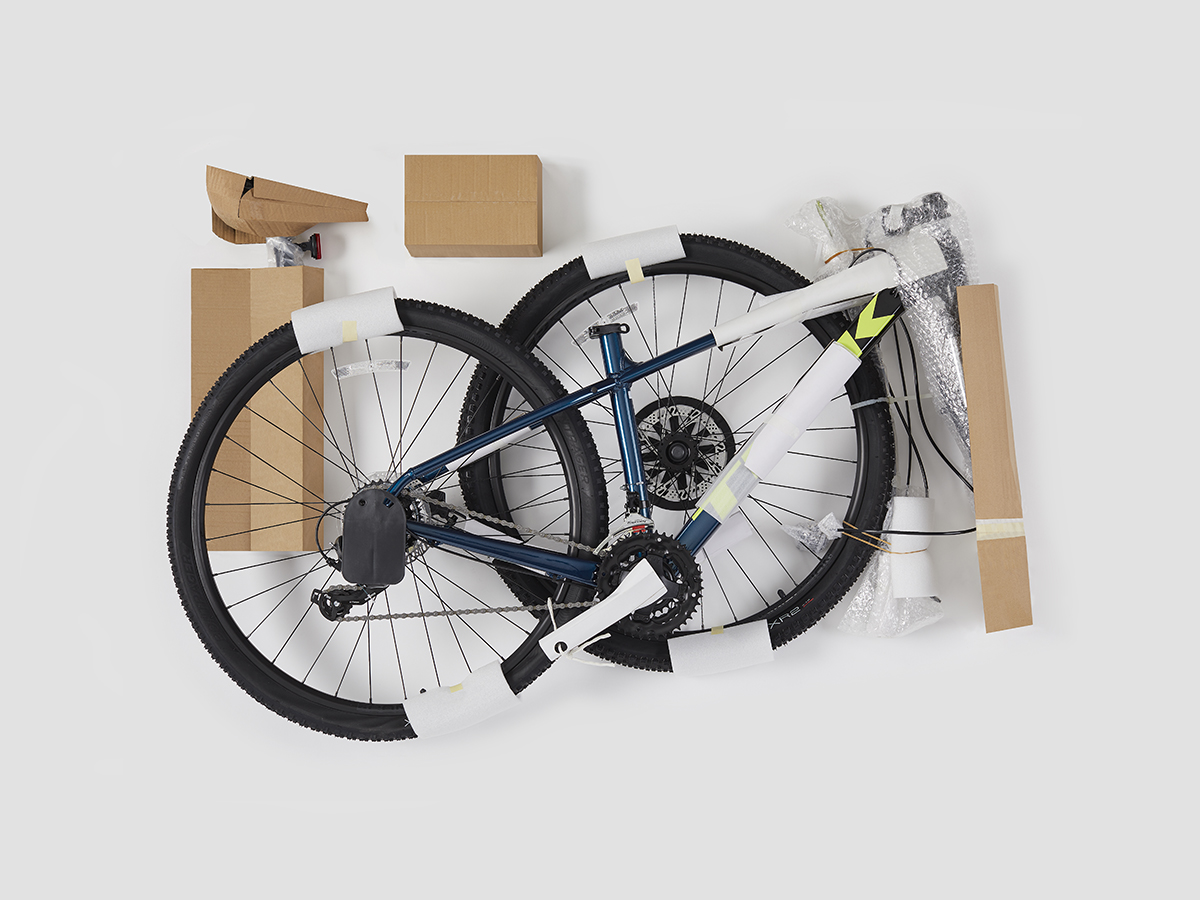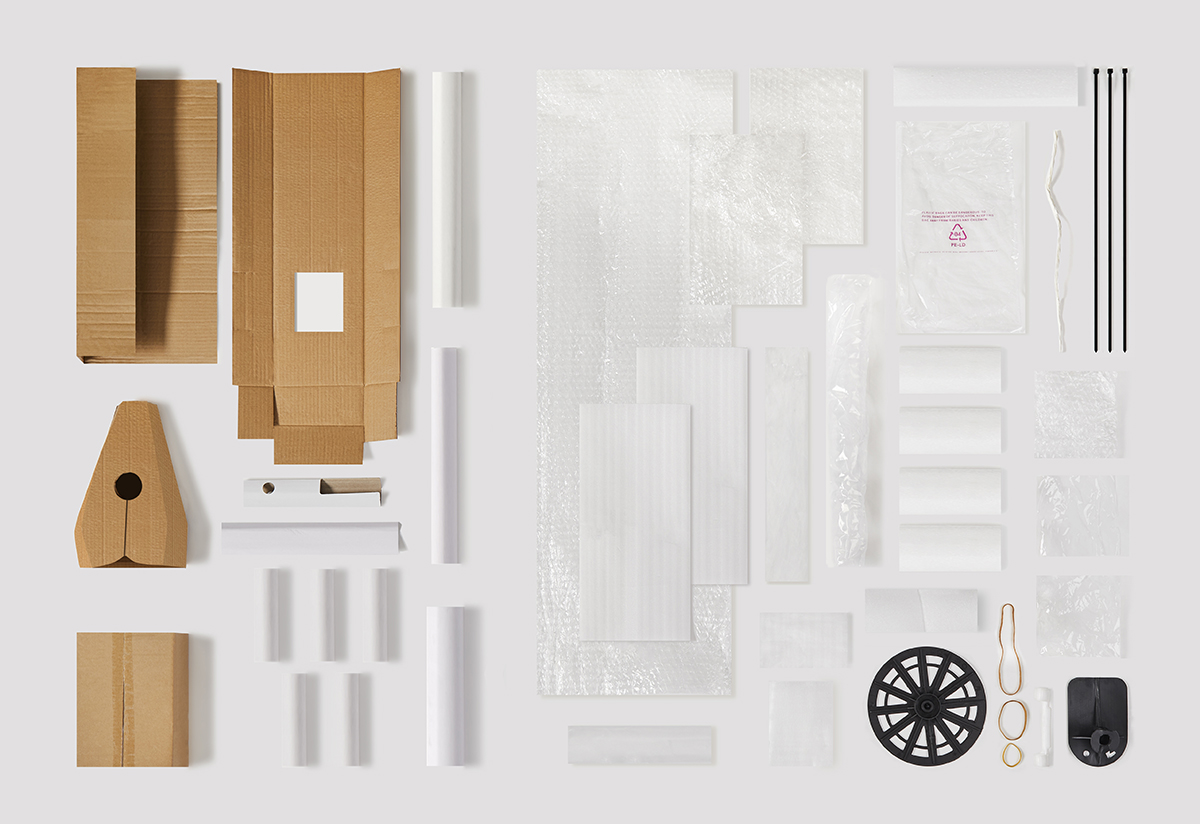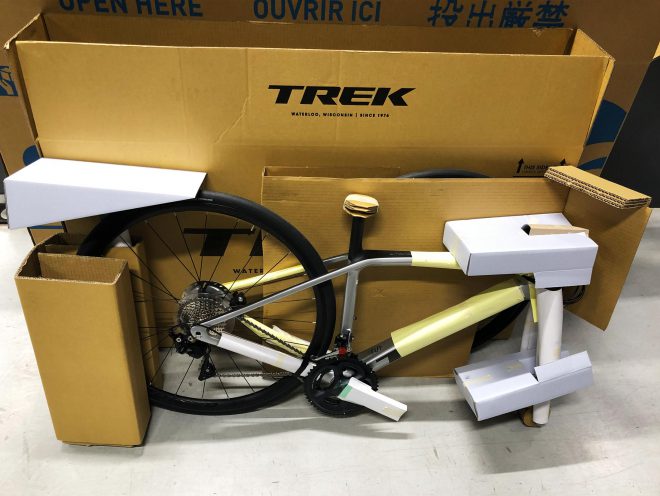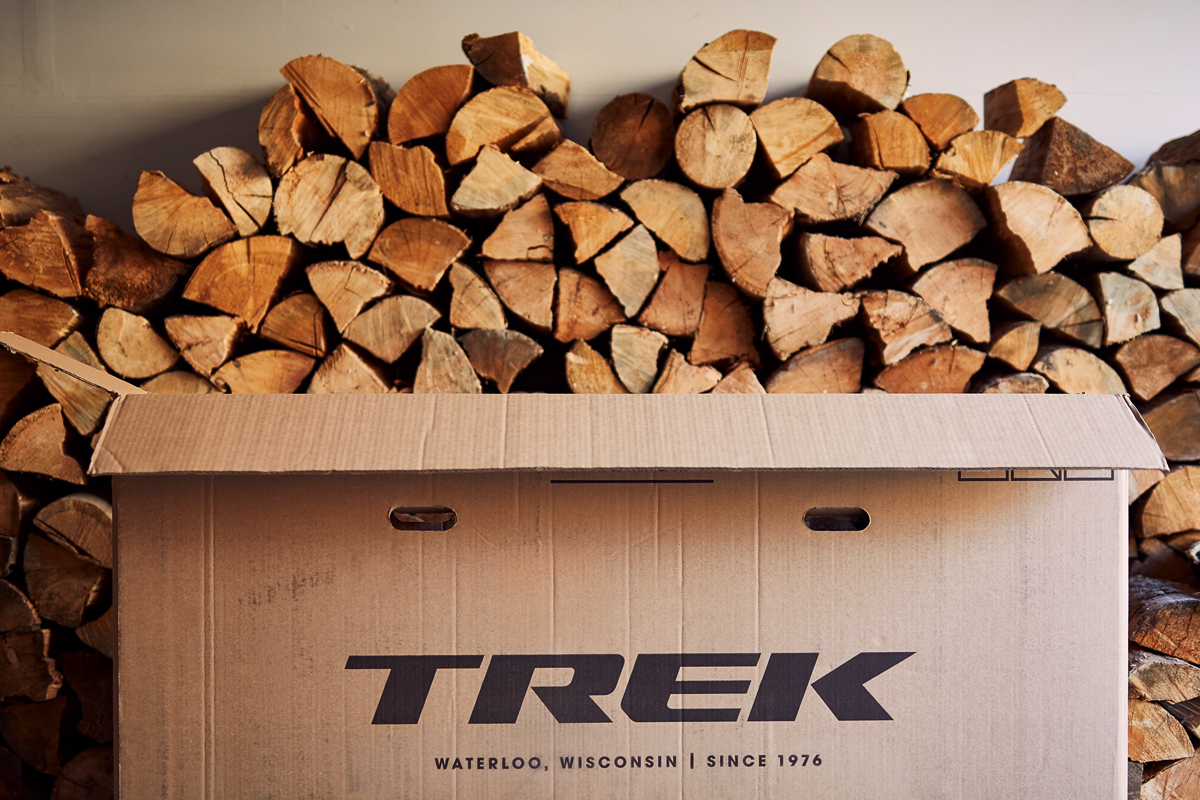- Responsibility
- 11 June, 2021
- Trek
How we removed 196,678 kg of plastic Updated bike and aftermarket packaging yields milestone results
The effectiveness of a movement isn’t measured by its most impressive headliners, but by the sum of its many smaller parts. The packaging teams at Trek pictured a cleaner world with less plastic waste, and over the last year, they’ve overhauled many of our packaging systems for bikes and Bontrager products by making small, meaningful changes that added up to something big.
To meet Trek’s goal of plastic-free packaging by 2024, our teams have worked to replace petroleum-based plastic components from our bike and aftermarket product packaging.
Eliminating all plastic waste is not a one-and-done deal. Packaging is crucial in the bike industry. It keeps our products safe and undamaged from the factory to your doorstep. Each change in how we package bikes and products is vetted, and we measure effectiveness and environmental impact. These changes are tried-and-true improvements of our packaging models, and we could not be more excited to share our progress.
We took a customised approach to reducing plastic waste for each of our products, and the amount of plastic we were able to remove from our packaging varied depending on model specifications, the products’ material composition and how much assembly is required after the product leaves our warehouse.
Because of this, some bikes saw a reduction of 7 plastic parts per box while others bid farewell to 42. Our aftermarket products, which are smaller and generally require less packaging, shed a plastic bag or zip tie here or there.

Marlin's old packaging

Marlin's new packaging

Marlin's old packaging

Marlin's new packaging
We asked: what are the biggest pieces of plastic or foam? What purpose do they serve? Can cardboard or paper do the same thing? Following that process, we were able to eliminate the following pieces from most bike boxes:
- Down tube foam and plastic wrap
- Top tube foam and plastic wrap
- Seat tube foam and plastic wrap
- Head tube foam and plastic wrap
- Crank arm foam wraps
- Chainstay bubble wrap
Some plastic packaging is harder to replace with a suitable recyclable counterpart. In some instances, we opted for a plastic option that’s easier to recycle or up-cycle. Some examples include plastic wraps for smaller components, which we replaced with more durable Ziploc-style bags and zip ties, which we replaced in some cases with nylon string. Some of these changes may seem small, but their cumulative effects produced some staggering changes in Trek’s plastic footprint
Bike packaging total: 191,416 kg saved
As with any major goal, these changes don’t all happen at once. Each bike box model that was overhauled saw a partial reduction in plastic content. Below you’ll find a breakdown of each bike category and their associated changes.

Waste saved in bike packaging
Marlin, Verve and other entry-level adult bikes: 111,584 kg
Kickster: 454 kg
Precaliber 12″/16″: 8,165 kg
Precaliber 20″/24″: 17,690 kg
Rail and Powerfly: 25,855 kg
Madone, Supercaliber and other high-level adult bikes: 18,144 kg
Townie 7 and 9: 5,715 kg
E-bikes produced in Germany: 3,810 kg
Aftermarket product packaging total: 5,262 kg saved
Each aftermarket product bid farewell to a piece or two of its minimal plastic packaging. These items have comparatively small packaging systems, but the aggregation of each improvement is where we see the big changes.

Waste saved in aftermarket packaging
Nylon straps: 771 kg
Plastic laminates: 2,268 kg
Plastic hangers: 590 kg
Mountain bike grip packaging: 1,134 kg.
Glove packaging: 367 kg
Saddle covers: 73 kg
Plastic bags for tyre sealant injectors: 59 kg

About the Author: Trek
Our mission: we build only products we love, provide incredible hospitality to our customers, and change the world by getting more people on bikes.




